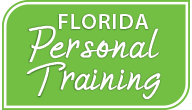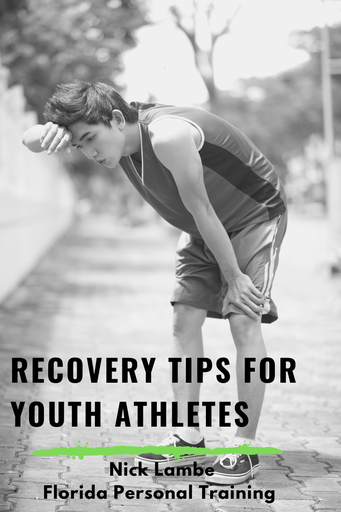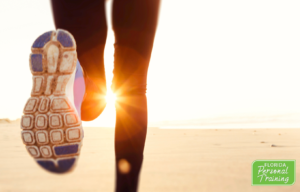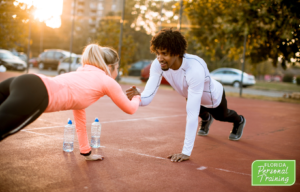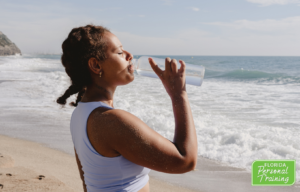Most athletes know that getting enough rest after any type of exercise is essential, but let’s take this further and talk about what we, the athletic trainers, actually mean when we say, “rest and recover.” Rest days are critical for the athlete’s physiological (body) and psychological (mind) well-being. Occasionally passive recovery (doing nothing) is needed however, this is the exception and not the rule.
When you exercise, tiny tears form in the muscles that will eventually help the muscle grow bigger and stronger as it heals. The recovery time is when the body adapts to the stress that was placed on it during exercise. This is when the real effects of training take place- not when the athlete is exercising.
Biologically, your body is the only thing that heals your body! Let me say it again: It is YOUR BODY that does the healing after you break it down. What you can do to promote recovery, is place your body in an optimal healing environment. Athletic trainers hold the golden key to unlock recovery through an evidence-based approach. This is vital! With the goal of optimal sport performance, athletic trainers also keep in mind the two distinct categories of recovery: short- and long-term recovery.
SHORT-TERM RECOVERY
Short-term recovery (active recovery), takes place following intense exercise. The primary goal during this recovery period is to keep the body moving at a less intense pace. Active recovery should maintain the heart rate above the resting rate and should not include the same repetitive movements that the athlete performed during their training or practice.
Some examples of this include:
■ Swimming, aqua walking, or other aquatic activities
■ Jogging, brisk walking, or jogging
■ Cycling or stationary cycling
■ Elliptical or rowing machine
■ Gentle Yoga
■ Light weightlifting (30%-40% less than your usual weight)
Active recovery is also the best time to include stretching and massage to improve range of motion. All of this is done to decrease the risk of injury. A
good way to understand this is to think of your muscles as a rubber band. What happens to a rubber band in the cold if you try to stretch it? It snaps and breaks pretty quickly. Now what about if you stretch a rubber band when it is warm? It is able to withstand a stretch without breaking. Same goes for your muscles. You never want to stretch “cold” muscles. Rather you get a longer lasting, more effective stretch once your muscles have been “warm.” It is important to recognize that not all stretching is created equal, and recovery tools like a foam roller CAN be effective when used correctly. An athletic trainer will provide you with the proper indications, techniques, and correct your form to optimize your results.
LONG-TERM RECOVERY
Long-term recovery refers to periods of time that are built into a seasonaltraining schedule. This would include changing training variables, modifying
workouts, and cross training. As a parent you can help advocate for your athlete’s health by asking the coaching staff and athletic trainers what is being done to incorporate these days or weeks of recovery in to the athletic season.
YOUTH SPORTS SPECIALIZATION RECOMMENDATIONS
NATA has released an official statement with health-focused recommendations to reduce the risk of injury due to youth sports
specialization. NATA’s statement has been endorsed by Professional Football Athletic Trainers’ Society, Professional Hockey Athletic Training Society, Professional Soccer Athletic Trainers’ Society, National Basketball Athletic Trainers’ Association, Professional Baseball Athletic Trainers’ Society and the NATA Intercollegiate Sports Medicine Council. The statement includes the following recommendations, all aimed at address the health and well-being adolescent and young athletes:
- Delay specializing in a single sport for as long as possible: Sport specialization is often described as participating and/or training for a
single sport year-round. Adolescent and young athletes should strive to participate, or sample, a variety of sports. This recommendation supports general physical fitness, athleticism and reduces injury risk in athletes. - One team at a time: Adolescent and young athletes should participate in one organized sport per season. Many adolescent and young athletes
participate or train year-round in a single sport, while simultaneously competing in other organized sports. Total volume of organized sport
participation per season is an important risk factor for injury. - Less than eight months per year: Adolescent and young athletes should not play a single sport more than eight months per year.
- No more hours/week than age in years: Adolescent and young athletes should not participate in organized sport and/or activity more hours per week than their age (i.e., a 12-year-old athlete should not participate in more than 12 hours per week of organized sport).
- Two days of rest per week: Adolescent and young athletes should have a minimum of two days off per week from organized training and competition. Athletes should not participate in other organized team sports, competitions and/or training on rest and recovery days.
- Rest and recovery time from organized sport participation: Adolescent and young athletes should spend time away from organized sport and/or activity at the end of each competitive season. This allows for both physical and mental recovery, promotes health and well-being and minimizes injury risk and burnout/dropout.
ONE LAST THING
As you can see, recovery is essential to an athlete’s ability to stay in the game they love. Your athlete can do all the right things: attend recovery sessions, follow their athletic trainer’s recovery recommendations, and even follow the NATA’s guidelines to reduce the risk of injury. BUT, it is all in vain without one key piece to every athlete’s routine. When it comes down to it, sleep plays a major role in athletic performance and recovery. The quality and the amount of sleep, to a great extent, determines the effectiveness of recovery. The majority of muscle repair and growth occur
during sleep when hormones are being released. Athletes who do not get enough sleep will see a decrease in their game, increase the possibility of fatigue, have low energy levels and poor focus. This puts an athlete at a greater risk for injury. The American Academy of Pediatrics Childhood Sleep Guidelines recommend children between the ages of 6-12 should get 9-12 hours of sleep and teenagers 13-18 should sleep 8-10 hours to promote optimal health. You might be thinking- “How is my kid going to get 8 hours of sleep?” Let me remind you, that everyone is given 24 hours in a day. As a parent but especially a parent of an athlete, it is IMPERATIVE that you make sleep a priority. Without it, your athlete will not reach their full athletic potential
